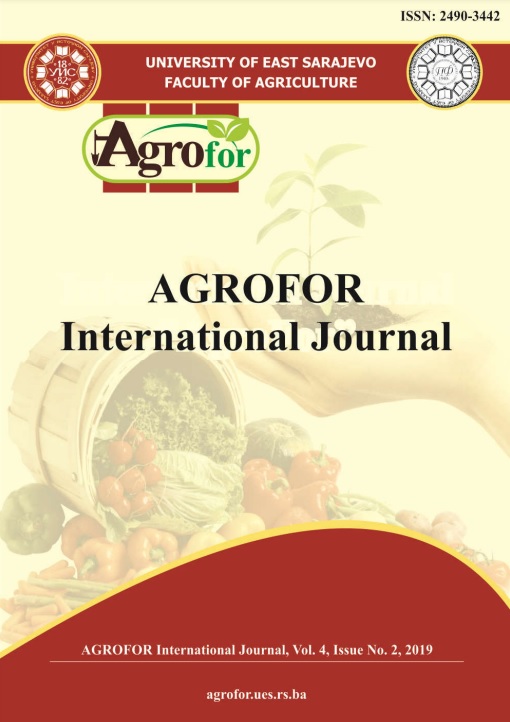THE EFFECTS OF PARAFFIN AND PARAFILM APPLICATIONS AND DIFFERENT ROOTSTOCKS ON YIELD OF GRAFTED VINE IN ‘BLACK MAGIC’ GRAPE CULTIVAR
DOI:
https://doi.org/10.7251/AGRENG1902051KAbstract
The scions belonging to 'Black Magic' grape cultivar were grafted on ‘41B’, ‘1103 P’, ‘Fercal’ and ‘SO4’ American rootstock cuttings using omega grafting method in the experiment. Paraffin was applied to one half of the grafted cuttings. The
other half was wrapped with parafilm and then paraffin was applied. Grafted cuttings were planted in perlite medium at 3.0 x 3.5 cm intervals inside plastic buckets and kept in the stratification room for 4 weeks. Grafted cuttings, which had been maintained under room conditions for one week, were then grown for two months under unheated greenhouse conditions. In order to determine rootstock and application effects, bud burst ratio (%), callus formation rate (%), callus formation degree (0-4), rooting ratio (%), rooting degree (0-4), shoot length (cm), shoot diameter (mm) and grafted vine ratio (%) were examined. According to the results of the study, it was determined that paraffin+parafilm application yielded better results than paraffin application in terms of bud burst ratio (respectively 70.83%, 53.33%), callus formation ratio (respectively 83.75%, 69.58%) and yield of grafted-vines (respectively 68.33%, 51.67%). In terms of the rootstocks, bud burst ratio was determined to be the highest in SO4 rootstock (71.67%) and the lowest in Fercal (54.17%). 1103 P rootstock yielded a highest value than other rootstocks in terms of shoot length (26.17 cm), callus rate at grafting surface (88.33%), and rooting ratio (97.50%). The effect of rootstocks on shoot diameter, rooting degree, and grafted vine ratio was found to be similar.

